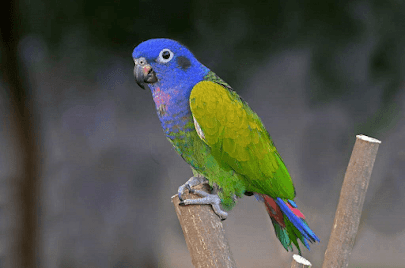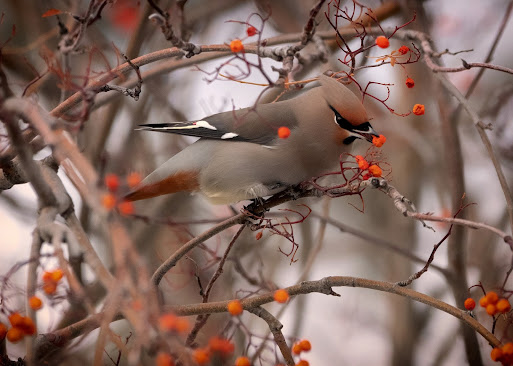The Gouldian oscine
The Gouldian oscine, additionally named because the girl Gouldian oscine and therefore the rainbow oscine, is prized primarily for its beautiful animal material. It happens naturally during a sort of placing colours, and is usually differentiated in name only by the colour of the top. as an example, the black-headed, the red-headed, and therefore the yellow-headed Gouldian ar a number of the on the market sorts, although a number of the opposite mutations ar distinguished in name only by body color. within the wild grasslands of Australia, wherever they originate, they are doing not vary the maximum amount in color as they are doing in captivity. There, most Gouldians have a black head, and solely atiny low proportion have a red head. some simple fraction of untamed people have AN orange head.
In 1841, English zoologist, John Gould, named these spectacular very little birds when his late partner, girl Elizabeth Gould, and appointed them the foremost lovely oscine within the world. it might be troublesome to contradict him. the woman Gouldian oscine appears like a handcrafted figurine, with seamless rotation and sensible, esthetical hues. Six years later the species created its thanks to Europe, and quickly caught on with pet fanciers.
Personality & Behavior
Gouldians ar pleasant “watching only” birds — they don’t prefer to be command, and might even panic and die once handled. Stress is deadly for these fragile birds. they're not generally hand-raised (only underneath emergency circumstances), and can not take well to taming efforts. they're beautiful to look at, however to not hold. If properly cared for, these birds are rumored to measure for quite four to six years. Speech & Sound Gouldians aren’t the simplest finches to stay, being a lot of less hardy than different common finches, just like the oscine|Poephila castanotis|grassfinch|grass finch} and society finch. They arn’t suggested as initial birds as a result of they're delicate and might be overcome in extreme temperatures and are at risk of a range of ailments that a novice bird guardian might not acknowledge till it's going to be too late. Gouldians ar among the foremost troublesome finches to breed with success as a result of they're not tremendous folks and have a bent to abandon each eggs and babies, or perhaps refuse to nest in the slightest degree. those who raise Gouldians typically keep society finches additionally to function foster folks for eggs and babies. Societies ar marvelous folks and can be happy to foster different species. you'll be able to place plastic eggs at a lower place the Gouldians because the eggs ar removed to be placed with the society finches. Some Gouldian pairs do create good folks, however. Goulds ought to be a minimum of a year previous before they're bred. they like to nest in an exceedingly little, lined house, sort of a wood nest box or lined basket. The box is most popular as a result of the oscine can’t accidentally catch a toe within the woven straw, and therefore the box is additionally easier to access. Gouldians don’t build nice nests, thus place some material within the nest to urge the oldsters started. The finches lay between 3 and 6 eggs that hatch a bit over period of time when being ordered. regarding 3 weeks later the babies ar able to leave the nest, and a couple of week later they're feeding on their own. The babies ought to be served millet spray and eggfood, additionally as different soft foods that they will digest simply.
Gouldians are little, however they create nice edifice birds and appreciate an outsized, planted garden setting. If they’re given enough house, they're going to get in conjunction with society finches and equid finches, however not weavers or whydahs,both of which might be bullies. Finches want plenty of exercise, thus their housing ought to be giant enough to permit flight. If the cage is just too little, their time period are going to be reduced and therefore the feminine won't get enough exercise to keep up smart breeding condition, leading to egg binding and even death. Cage bars ought to be no quite 1/2 in. apart, and therefore the cage ought to have doors giant enough for feeding, watering, and improvement, however not thus giant that the finches can escape once opened.
A oscine can thrive on a pelleted base diet, like Lafeber’s Premium Daily Diet specifically designed for finches. These birds are primarily seed-eaters within the wild, thus there diet ought to be supplements with a high-quality seed combine they must additionally get a rotation of grubs, greens, eggfood, and different veggies daily. they will have atiny low quantity of grit and charcoal within the diet, however not a lot of. A cuttlebone ought to be within the cage in the slightest degree times. Health & Common Conditions
Gouldian finches ar at risk of air-sac mite infection, particularly once to a fault stressed. this is often a significant medical condition that warrants forthwith veterinary care. If caught early enough, a oscine may be with success treated. Gouldian finches also can be prone to scaly face (a condition caused by a mite that presents as white, scaly areas round the beak/eyes, additionally because the legs), that warrants a decision to the vet. Finches also can have overgrown nails or beaks, that ought to be self-addressed by associate skilled bird groomer or vet.
Get a Gouldian oscine
Although there wild populations are in danger, Gouldian finches are extensively in captivity and, therefore, are without delay obtainable in giant pet stores, from vertebrate retail stores and thru bird breeders. Care & Feeding
As with most finches, the Gouldian may be a quiet enough bird that peeps and sings a bit. produce} a pleasing sound that's uncertain to wake you up or create a drag with neighbors, although it's persistent. The granule-sized Premium Daily Pellets for finches by Lafeber is dead sized for finches and provides optimum nutrition. The Gouldian is polymorphism, which means that there’s an apparent distinction between the genders. Males of this species have a lot of brighter body covering than the females, creating them simple to inform apart at maturity. Immature Gouldians are a colorless, greenish-grey color and appearance as just like their folks as associate apple will to a banana. It’s troublesome to sell them this fashion as a result of sex and mutation are determined by the colours that emerge when the bird’s initial molt, that happens at regarding four to 6 months. The babies look worn and moth-eaten whereas they’re sloughing, and that they are underneath a good deal of physical stress.

















































